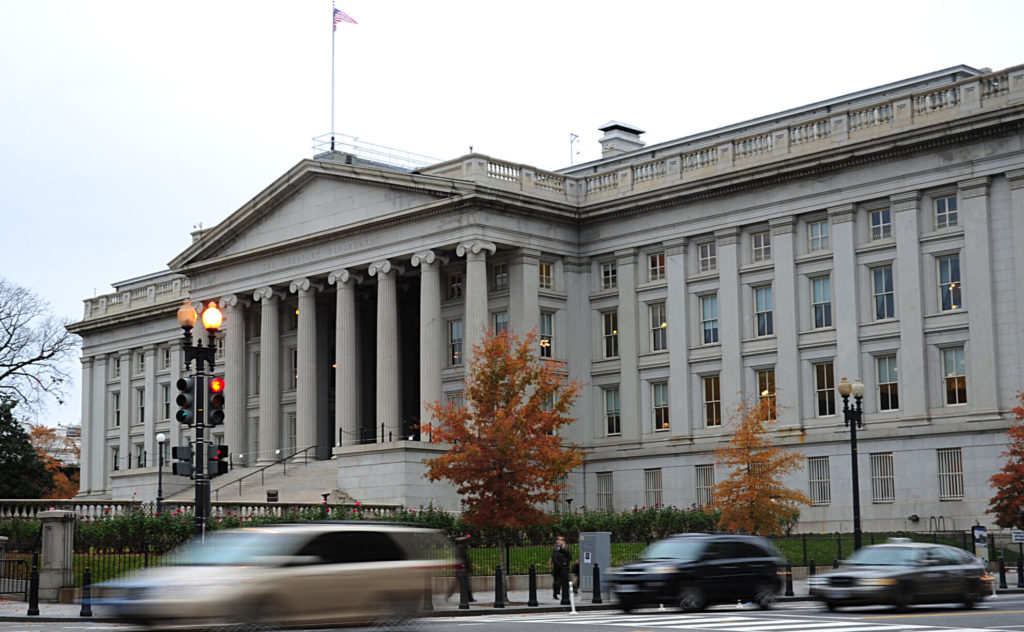
全球新冠“大流行”即将结束?多位专家提到一个关键时间节点
来自 /瞭望智库
01/25/2022
世界卫生组织23日表示,奥密克戎变种毒株已把新冠大流行带到一个新的阶段,并可能使欧洲的疫情走向终结。不过,现在把新冠大流行视为一种地方性流行病还言之过早。
世界卫生组织欧洲区域办事处主任克鲁格(Hans Kluge)23日接受法新社访问时说,到了3月,可能有60%的欧洲人都已感染奥密克戎变种毒株,“本区域的疫情有可能正在走向结束”。
他指出,目前席卷欧洲的这波奥密克戎疫情一旦消退,“我们将有几个星期甚至几个月的全球免疫期,这可能得归功于新冠疫苗,或者是因为人们感染新冠后产生了免疫力,以及季节转变降低了传播风险”。
上周,世卫组织非洲区域办事处也表示,自奥密克戎主导的第四波疫情达到峰值后,该区域的确诊病例数急剧减少,死亡人数也首次下降。
不过,克鲁格23日还强调,现在就把新冠大流行视为一种地方性流行病还是言之过早。
他说:“很多人都在讨论新冠成为地方性流行病,但地方性流行病是可以预测它将在何时发生的。这个病毒(新冠)已经多次让我们措手不及,所以我们还是必须非常谨慎地看待它。”
延伸阅读一:
全球新冠“大流行”将结束?
专家:抱最好希望,做最坏准备
文 | 林容
本文转载自成都商报所属微信公众号“红星新闻”(ID:cdsbnc),原文首发于2022年1月23日,原标题为《全球新冠“大流行”将结束?专家:抱最好希望,做最坏准备》,不代表瞭本站观点。
请想象一下,也许在不远的未来你能去意大利来一趟夏日旅行,在拍照前或不需要再摘口罩。两年多来的疫情,似乎让人们试图忘记它一小会儿都是不太可能的事。不过,全球的传染疾病专家们得到了一种普遍性的共识:新冠大流行的终点已经看得到了,可能就在今年。
“如果应对得当,我们将会有一个新冠不再那么主宰我们生活的2022年。”美国前疾病控制与预防中心(CDC)主任汤姆·弗里登表示。另一位专家甚至大胆预测:“奥密克戎之后,新冠疫情会再度袭来,但是大流行不会了。”

1月19日,著名医学期刊《柳叶刀》刊发了华盛顿大学健康指标与评估研究所的主任克里斯托弗·莫瑞教授的评论文章,他表示,从2021年11月到2022年3月下旬,全球超过50%的人都将感染奥密克戎,但是疫情会从3月起开始逆转。
1 全球新冠大流行将结束?
3月是关键或进入一段时间的“安静期”
新冠疫情的下一阶段是什么样?我们何时才能进入下个阶段?这是斯坦福医学院的流行病学家伊冯娜·马尔多纳多以及其他联邦部门的专家、学界同僚、地方卫生官员们节假日不休息,想要搞清楚的问题。
“我们其实并不知道确切的情况。”马尔多纳多教授指出,尽管有一些迹象,但谁也没有真正预测到奥密克戎的出现。不过,专家们既从最早报告奥密克戎的南非看到了希望,也从英国、美国的相关疫情中相继看到了迅速好转的趋势。

克里斯托弗·莫瑞教授及其团队一直在为白宫提供新冠疫情建模,准确预测疫情。他在《柳叶刀》1月19日发表的一篇评论中指出,从2021年11月到2022年3月下旬,全球超过50%的人都将感染奥密克戎,但是疫情会从3月起开始逆转。
莫瑞分析道,届时,全球过半人群感染奥密克戎产生的自然免疫力、各国疫苗接种率的提高以及加强针的接种等会让全球的新冠免疫水平处于一个最高水平。因此,在此后的数周甚或数月里,全球的病毒传播力预计会很低。传染病和疫苗学专家、加州大学伯克利分校公共卫生学院教授约翰·斯沃茨伯格也认为,从3月开始,病例数量持续下降。

当奥密克戎疫情好转之后,全球预计会有一段“安静期”。不过,马尔多纳多教授指出:“我完全可以预测另一个版本的病毒会卷土重来。这就是给疫情下一阶段带来不确定性的可能状况。”
2 下一个变种是什么?“要抱最好的希望,做最坏的准备”
专家们认为,下一个新变种可能跟奥密克戎一样具有超强的传播力,甚至有过之而无不及。它可能会给人们造成更重的症状,也可能完全无症状。
加州大学旧金山分校的流行病学家乔治·卢瑟福指出,病毒可能像早期变种一样慢慢变异,也可能像德尔塔和奥密克戎一样出现“大跳跃”,现在预测“下一个变种是什么?都是瞎说。”莫瑞教授也认为,新的变种一定会出现,其中一些可能会比奥密克戎造成的症状更严重。
报道指出,新冠病毒可能永远也不会彻底消失。以HIN1流感病毒为例,它在1918年作为一种新病毒出现的时候,开启了人类历史上最严重的一次大流行之一,感染了全球三分之一的人口,杀死了5000万人。那场大流行最终结束了,但是病毒至今还存在。它就是我们现在“年年见”的H1N1病毒的“曾曾祖父”,尽管从那时起已经有了太多变异,但依然是同一种病毒,也许新冠病毒也会这样。

据CDC数据,美国平均每年有约3.5万人死于流感,但是“我们继续过我们的生活。”斯沃茨伯格教授不认为“我们的生活会回到完全像新冠疫情以前一样。”
马尔多纳多教授认为,那是最好的情况。她强调,如果新冠病毒开启“流感模式”,全球就需要保护易感人群,避免重症,确保他们接种疫苗并且有单克隆抗体和抗病毒药物,而疫苗企业也要针对不同毒株制造针对性的疫苗,让人们每年接种。政府也要加强检测能力,因为除非民众通过检测知道自己感染了,否则口服药物和单克隆抗体都无用武之地。
在最坏和最好的情况之间,第二种状况是疫苗制造商不能及时制造出针对性的疫苗,或者没有足够的药物来治疗患者。
而最坏的情况是变种对疫苗和治疗都产生了逃逸能力。但马尔多纳多教授认为,这种情况不太可能发生。福西博士也希望这种情况不会发生,但他无法给出这种情况发生的具体概率数据,“要抱最好的希望,做最坏的准备”。
莫瑞则认为,总的来说,经过了过去两年从科学研究、政府应对和民众意识提升之后,未来的新冠病毒疫情潮对人类健康的影响将变得比较小。新冠将成为又一种会反复出现的疾病,卫生系统和整个社会都必须应对。“奥密克戎之后,新冠疫情会再袭来,但是大流行不会了。”莫瑞说。
延伸阅读二:
境外新冠疫情突发巨变,对我们的启示是什么?
文 | 唐金陵
本文转载自微信公众号“临床研究与循证医学”(ID:cuhk_epibiostat),原文首发于2022年1月21日,原标题为《境外新冠疫情突发巨变,对我们的启示是什么?》,不代表本站观点。
新冠疫情在境外突发巨变,原因是奥密克戎变异株的出现,大大提前了之前预期的境外疫情结束的时间表。
2022年1月19日,国际知名医学杂志《柳叶刀》在线发表多篇关于奥密克戎的文章,在国际上一片压抑和谨慎中,发出了不同的声音。对了解目前新冠疫情的国际局势以及未来的发展动向,十分值得一读。

美国知名卫生经济学学者Christopher Murray在其评论文章中指出:
1. 奥密克戎正在以前所未有的速度席卷全球,但大多数为无症状感染(高达80%-90%),很多感染者并没有被发现。
2. 尽管疾病严重程度有所降低,但由于短时间出现大量病人,住院人数将会继续上升,未来4-6周将是很多奥密克戎流行的国家和地区医疗系统吃紧的时刻。
3. 从整体上看,各种防控措施,包括增加戴口罩、推进第三针疫苗接种等,对于奥密克戎流行国的意义已经不大,因为在很多地方奥密克戎的流行已经见顶。
4. 到今年3月,全球半数以上的人口将会感染奥密克戎,通过“自然感染”和疫苗接种,全球人群免疫水平将达到高位。
5. 未来新冠病毒还会卷土重来,但不再是大流行,因此将更加可控。Murray还推测:“新的新冠病毒变异株肯定会出现,其中一些可能比奥密克戎更加严重“。但是,笔者认为出现比奥密克戎更令人恐慌的变异株的机会已经微乎其微。
毫无疑问,一个病毒在如此大规模流行的情况下,出现新的变异株是必然事件。而且,一些可能致病性更强,一些可能传播力更高。出现比奥密克戎传播力更高的变异株不是没有可能,但可能性很低,因为奥密克戎的传播力已经接近或超过了很多已知的具有高度传染性的疾病。
即使传播力更高的毒株出现,也未必是坏事,因为传播力和致病性一般成反比,传播力增高了,致病性可能就降低了。比如,与之前的Delta变异株相比,奥密克戎就是如此。另外, 同样由于致病性和传播力成反比的规律,在奥密克戎基础上,出现致病性和传播力同时都增高的毒株的机会将更加微小。因此,奥密克戎可能就是这次新冠大流行的终结者。
另外,Murray还说,卫生防控措施已经作用不大。笔者认为,这个说法可能会导致误解。这在奥密克戎流行失控或者已经见顶的国家和地区可能如此,但是对于没有出现奥密克戎大流行的国家和地区,控制人群聚集,保持社交距离、戴口罩、洗手、核酸检测、检疫、隔离、第三针疫苗,等等,仍是“外防输入、内防扩散”的关键环节。
即使在奥密克戎大流行的时期,这些措施也是预防医疗挤兑、减少死亡的关键调节机制,所以一点也不能放松。
对于我们来说,无论是主动出击,还是被迫应战,打好疫苗,提高公共卫生措施灵活收放的能力,以及提高救治重症新冠病人的能力,都将是我们未来防控预案里必须考量的重要方面。
最后,如果今年新冠大流行在一些地区如期结束,这意味着这些地区的群体免疫屏障是在短短不足一年的时间内建立起来的。我们知道新冠免疫力随时间不断下降,到一定时期后,这些地区整个人群将会同时再次进入免疫水平低下的时刻,那时新冠疫情是否会卷土重来,将是拷问全世界的大问题。
White House: 400 wealthiest families paid average tax rate of 8.2 percent
BY NAOMI JAGODA
9/23/2021

The White House released an analysis on Thursday estimating that the 400 wealthiest American families paid an average federal income tax rate of only 8.2 percent on $1.8 trillion of income from 2010 to 2018.
“Two factors that contribute to this low estimated tax rate include low tax rates on the capital gains and dividends that are taxed, and wealthy families’ ability to permanently avoid paying tax on investment gains that are excluded from taxable income,” the report said.
The analysis, which was authored by economists from the White House Council of Economic Advisers and the Office of Management and Budget, comes as Democrats in Congress are working on a tax-and-spending package that would advance much of President Biden‘s agenda. Biden has proposed a number of tax increases on the wealthy and corporations in order to pay for his spending priorities in areas such as health care and child care, and he is seeking to prevent moderate congressional Democrats from scaling back these proposals.
The White House analysis is based on IRS statistics, the Federal Reserve’s Survey of Consumer Finances, and Forbes magazine estimates about the 400 wealthiest Americans.
The White House noted that its estimate of the tax rate for the wealthiest households is “much lower” than other groups’ estimates of top income tax rates. The administration’s takes into account income from unrealized capital gains, which is not typically included in this type of analysis.
The report highlighted Biden’s proposals to raise the top capital gains rate and end the “stepped-up basis” tax preference that benefits heirs as ways to address the fact that wealthy Americans pay a low tax rate.
Legislation approved by the House Ways and Means Committee earlier this month included a smaller capital gains increase than Biden had proposed and does not repeal stepped-up basis. But Senate Democrats are expected to offer their own ideas for how to pay for the spending package, and Finance Committee Chairman Ron Wyden (D-Ore.) has indicated that he wants to prevent billionaires and their heirs from avoiding taxes on stock gains.
Wyden said in a statement Thursday that “the White House’s new report is shocking but not surprising.”
Top 1 Percent Avoid Paying $163 Billion in Taxes Each Year: Treasury Department
By Leia Idliby
9/08/2021

The Department of Treasury has found that the wealthiest one percent of Americans have avoided paying $163 billion in taxes per year.
The Treasury’s analysis, titled “The Case for a Robust Attack on the Tax Gap” and written by Deputy Assistant Secretary for Economic Policy Natasha Sarin, opens by explaining, “A well-functioning tax system requires that everyone pays the taxes they owe.”
The report argues that narrowing the tax gap, which accounts for the difference between owed and collected taxes, will lead to a more equitable economy, as it currently “totals around $600 billion annually,” which would lead to “approximately $7 trillion of lost tax revenue over the next decade.”
Sarin’s report includes a table detailing tax data from 2019, which ultimately found that more than $160 billion lost annually is “from taxes that top 1 percent choose not to pay.”
The report goes on to argue that in order to collect owed taxes and enforce laws against high earners and corporations, the IRS needs funding to update their technology and to hire agents able to decipher “thousands of pages of sophisticated tax filings.”
“It also needs access to information about opaque income streams — like proprietorship and partnership income — that accrue disproportionately to high-earners,” she wrote.
The reports comes as President Joe Biden’s administration is pushing for a significant increase to the IRS budget. The White House has specifically called for $80 billion of investment over the next ten years, claiming it would help the government catch tax evasion schemes.
“Giving the IRS the information and resources that it needs will generate substantial revenue,” Sarin concluded. “But even more importantly, these reforms will create a more equitable, efficient tax system.”
Top 0.1% Tap Private Placement Life Insurance to Avoid Biden’s Taxes
Financial Advisor IQ
9/04/2021
The richest Americans who want to avoid paying higher taxes under President Joe Biden are tapping a niche product that has become more generally available, cheaper and flexible in recent months.
Some advisors who cater to the top 0.1% say that private placement life insurance is “dominating conversations,” according to Bloomberg.
Assets held in PPLI policies are tax-free, and when a policyholder dies, their heirs inherit the policy’s contents tax-free, Bloomberg writes. Assets inside a PPLI can also be brorrowed against or rolled into another insurance product, according to the news service.
PPLI policies, however, have complicated rules to qualify as life insurance to take advantage of the tax benefit, can fail if not properly funded and taking assets out comes with a heavy tax burden, Bloomberg writes.
“Clients are very interested in this right now,” said Tara Thompson Popernik, director of research for Bernstein Private Wealth Management’s wealth planning and analysis group, according to Bloomberg. “It takes some education to get them to wrap their heads around the concept, because it’s not just buying life insurance.”
But it’s not just the threat of Biden going after billionaires and millionaires to pay their “fair share” that’s making the loophole: a late-2020 insurance law change made PPLI “more powerful,” while competition among insurers has pushed down costs while increasing the choice of products, according to Bloomberg.
“Private placement life insurance poses a serious obstacle to President Biden’s goal of guaranteeing that high-income individuals pay tax on large gains at least once per lifetime,” said Daniel Hemel, a law professor at University of Chicago, according to the news service. “PPLI is a massive loophole — entirely legal, easy to exploit, and politically very hard to close.”
How Does Private Placement Life Insurance Work?
By Maxime Croll
9/04/2021
Private placement life insurance (PPLI) is a niche solution designed for wealthy individuals in high tax brackets who have a few million dollars available to commit.
Many times, those for whom PPLI was designed want to invest in hedge funds, but hedge funds can carry significant taxes: If the wealthy individual invests in them in their personal name, in a taxable account or in a trust, every trade the manager makes can generate a capital gains distribution, and any ordinary income is taxable at particularly high rates.
That’s a serious issue at higher income levels, where combined federal and state income and capital gains taxes can easily add up to nearly 50% in some jurisdictions.
One increasingly popular solution: Hold these assets within a life insurance policy.
Who does private placement life insurance make sense for?
PPLI isn’t for everybody. A good candidate for this strategy is someone with annual income in the millions, a net worth of $20 million or more or someone who controls a business that puts them in that category.
Life insurance comes with a number of important tax benefits, which can be major considerations for those in the highest tax brackets. But standard life insurance policies you can get from your neighborhood agent don’t contain the hedge funds, funds of funds and other alternative investments that these investors require for their own diversification and investment needs.
That’s where privately placed life insurance comes in: Wealthy families, family foundations, trusts, corporations and banks work with hedge funds and money management firms to create their own life insurance contracts, designed to reduce their tax burdens.
The idea is to combine the financial advantages of highly taxed hedge funds and similar investments with the tax advantages of life insurance. There are insurance and administrative costs associated with the life insurance contract, but the tax savings in a properly structured life insurance policy, plus the death benefit itself, more than make up for the additional insurance and administrative costs. And the insured can generally access most of the funds anyway, tax-free, via policy withdrawals and loans.
When a wealthy investor in a very high tax bracket wants to invest in hedge funds anyway, it often makes sense to create a privately placed life insurance policy to shelter the individual from taxes.
Qualifications to purchase PPLI
While anyone can buy a variable universal life insurance policy (as PPLIs are structured), PPLIs are an unregistered securities product. As such, agents can only present them to accredited investors.
Under current Securities and Exchange Commission (SEC) regulations, accredited investors are those with a net worth of at least $1 million (excluding primary residence), or income of at least $200,000 in each of the preceding two years. Married couples must demonstrate income of $300,000 in each of the preceding two years.
Ultimately, the owner is typically an individual or a trust. Holding the policy in an irrevocable trust allows the insured to keep the policy out of their taxable estate, possibly reducing eventual estate tax liability, though they give up rights to access the cash value prior to death.
In reality, the typical PPLI candidate or family has:
- A high net worth
- The ability to fund $1 million or more in annual premiums for several years, at least — $3 million to $5 million is typical
- A desire for hedge fund or alternative investment exposure
- Highly tax-inefficient investments
- High state and local income taxes in addition to federal (advisors should be alert to the effect of any state premium taxes on the strategy)
- A desire to shelter assets from creditors
It’s important to be able to make a significant investment over the first several years as this initial investment of premium “primes the pump,” meaning that, assuming the underlying investment subaccounts perform adequately, the insured’s policy can become self-funding. That is, growth in its cash value covers the cost of insurance. At that point, the insured can cease committing premium if they choose.
Where to buy private placement life insurance
Professional wealth managers tend to recommend vendors. However, some of the most prominent providers of PPLI services and insurance-dedicated funds (IDFs) include BlackRock, Wells Fargo Private Banking, John Hancock, Zurich, Crown Global and Pacific Life.
How private placement life insurance works
Privately placed life insurance is generally structured as a variable universal life insurance policy, meaning:
- Premiums are flexible. Policyholders can pay as much or as little premium as they like, whenever they like.
- The cost of insurance is deducted from the cash value in the policy subaccounts each month or each year.
- To keep the policy in force, the owner must pay enough premium to maintain enough cash value to cover the cost of insurance.
- If the cash value reaches zero, the policy will lapse.
The agent who sets it up will usually structure the policy to maximize cash value accumulation while keeping the death benefit (and thus the cost of insurance) relatively low. The policy owner, working with their insurance professional, then pays as much premium into the policy as possible every year.
The client gets the benefit of the tremendous tax advantages of the life insurance contract:
- Tax-free death benefits to heirs
- Tax-deferred growth of cash value
- Tax-free growth of dividends (if applicable)
Meanwhile, the insured still has access to accumulated cash values, which can be used for any purpose and accessed at any age. There are no penalties for accessing the cash value before turning age 59 1/2, as there are with annuities and with individual retirement accounts (IRAs). In addition, there are no required minimum distributions, as there are with annuities, IRAs and retirement accounts.
PPLI investments
As discussed, the best investment candidates for a PPLI policy are those that are tax-inefficient. They generate substantial current taxable income, imputed (phantom) income or capital gains unless they are held in a retirement account or life insurance vehicle that provides tax-free growth.
PPLI owners and their advisors either choose specific investments for their portfolios or carefully select money managers to manage their portfolios within the policies. Possible investments can include venture capital, real estate investment trusts, private equity funds, funds of hedge funds and commodity funds, or any fund with extremely high turnover rates that generate substantial short-term capital gains.
But that doesn’t mean anything goes. PPLIs must still meet IRS standards for investor control, insurance and diversification.
Investor control. Individual policy owners and family offices are prohibited from exercising influence over the specific investment decisions of the fund managers. If the owner exercises too much control, the IRS may disqualify the tax advantages of the policy. Current case law requires managers to operate on an independent, discretionary basis. Assets held in PPLI policies are not designed to be separately managed accounts, and they should not be treated that way.
Insurance standards. The life insurance structure allows owners to sell insurance-dedicated funds within the policy as often as they like and replace them with other qualified investments, without tax consequences. IDFs are financial products that are designed specifically for the PPLI market. Hedge funds and funds of funds often create a version of their flagship offering as an IDF that uses all the same strategies and managers but is also managed to adhere to laws and regulations that govern insurance portfolios.
Diversification requirements. Investments must also meet diversification rules:
- No single investment may make up more than 55% of the insurance subaccount portfolio.
- No two investments may constitute more than 70% of the portfolio.
- No three investments may constitute more than 80% of the portfolio.
- No four investments may constitute more than 90% of the total assets of the account.
Therefore, the portfolio must, in practice, contain a minimum of five distinct investments in order to fully qualify as life insurance. Otherwise, the IRS will disqualify the policy, and the owner will lose the tax advantages of the life insurance structure.
Accessing your money in a PPLI
Policy owners can withdraw from their cash value or borrow against it at any time, for any purpose.
Withdrawals Withdrawals are tax-free up to the basis of the policies. So owners can get back their premiums, minus fees, without tax consequences — as long as their subaccounts’ performance has kept up with the cost of insurance. If the cash value is greater than the owner’s basis in the policy — that is, what they have paid in — then additional withdrawals in excess of basis are taxed as a gain.
Policy loans You can borrow against the cash value of the policy with no underwriting or credit check. The loan is secured by the policy’s cash value. This makes the policy a solid choice for emergency funds. The loan does not have to be paid back, though the policy owner may want to replenish funds borrowed from the policy so as to maximize long-term tax-free growth.
Because the loans are secured by payments already made to the insurer, interest rates are often very low. Borrowers should be aware that interest does accrue, and borrowing will reduce any death benefits paid out unless the loan is paid back to the policy.
Contribution limitations and modified endowment contracts
The government imposes limits to how much premium the owner can contribute to the policy in a given year in order to help ensure life insurance is used for its intended purpose, as opposed to a tax shelter. The result of the contribution limit is the “seven-pay” test. If policyholders contribute so much premium to their policies that the policy would be paid up in less than seven years, it becomes a modified endowment contract (MEC). This will disqualify the policy from many of the tax advantages on withdrawals and loans:
- One of the great things about insurance policies is that when you withdraw cash value from an in-force life insurance policy, you get the benefit of first-in, first-out (FIFO) taxation. This allows you to withdraw as much as you’d like, up to your basis in the policy (the amount you have contributed), tax-free. If your policy becomes an MEC, this advantage disappears. Instead, the IRS will deem you to be withdrawing interest first, not your basis. This interest is taxable.
- Likewise, while the law allows you to take tax-free loans from a life insurance policy, once your policy becomes an MEC, those loans become taxable as income.
- Additionally, once your policy becomes an MEC, any withdrawals prior to age 59 1/2 become subject to a 10% early withdrawal penalty, just as with a qualified annuity or a 401(k).
Your policy documents should specify the annual MEC limit.
| Life insurance contract | MEC | |
|---|---|---|
| Premiums | Limited by seven-pay test | Not limited except by contract |
| Loans | Tax-free for life of policy | Taxable as income |
| Withdrawals | Tax-free up to basis (FIFO) | Taxable until all interest/gains are withdrawn |
| Death benefit | Tax-free | Tax-free |
| Death benefit amount | Usually kept small in PPLI to maximize growth of cash value | Used to maximize death benefit |
How are PPLI policies different from retail life insurance?
Structurally, privately placed life insurance is identical to a conventional variable universal life insurance policy. What sets the PPLI apart is the assets held in the subaccount: An everyday retail customer will choose from a limited menu of subaccount investments offered by the life insurance company.
But when you buy a PPLI, you can customize your investment subaccounts. You can include nearly any investment imaginable — from index funds to hedge funds. Your registered investment advisor or wealth manager can help design the investments in your menu of subaccounts.
Tax and other benefits of PPLI
High-income individuals are very tax-sensitive. The ordinary income tax rate on incomes above $518,401 in 2018 was 37%, plus additional Affordable Care Act taxes on high-income individuals. When you add in state and local income taxes in some jurisdictions, the income tax bite for high-income families could add up to nearly 50%.
The heart of the PPLI strategy lies in the tax advantage. The PPLI essentially converts a very tax-inefficient investment, such as a hedge fund, into a very tax-efficient one for the high-net-worth investor.
| Hedge fund held in personal account (typically) | Hedge fund held within a PPLI | |
|---|---|---|
| Death benefit | N/A | Tax-free death benefit |
| Income | Taxable at 37%-50% | Tax-free for life of policy |
| Short-term capital gains | Taxable at 37%-50% | Tax-free for life of policy |
| Long-term capital gains | Taxable at 20% | Tax-free for life of policy |
| Imputed income | Taxable at 37%-50% | Tax-free for life of policy |
| Transfers to other life policies | Taxable, gain over basis | Tax-free under IRC Section 1035 |
| Transfer to annuities | Taxable, gain over basis | Tax-free under IRC Section 1035 |
| Creditor protection | None | Enhanced |
| Estate tax treatment | Taxable unless in irrevocable trust | Taxable in estate of owner unless in irrevocable life insurance trust |
| Tax loss harvesting strategies | Investors can sell losers to offset capital gains | N/A, though losing policies can be surrendered |
| Treatment at death | Subject to probate | Bypasses probate — death benefit goes to beneficiaries in a matter of days |
This strategy neutralizes the impact of current income by placing the assets within a life insurance policy, with tax advantages similar to a Roth IRA. Assets within the policy enjoy tax-free growth for as long as they remain in the policy.
In addition to the tax benefits that generally accrue to life insurance cash values, PPLI policies often provide a number of additional benefits:
- Lower commissions. The cost of insurance and commissions is low compared to most retail life insurance products: Issuers are more interested in managing your money than in generating large upfront commissions.
- No surrender charges. Because they don’t rely on a commission-paid insurance sales force as traditional insurance companies do, they don’t need to recoup commission costs by imposing surrender charges.
- Phantom income is not taxed. Some investments generate a tax liability to the owner, even though there is no actual cash income distributed. For example, a zero-coupon bond pays no income until it matures, but the IRS forces taxpayers to pay taxes on imputed income as the bond approaches maturity. If the asset is held in a PPLI, the tax on imputed or phantom income is neutralized.
- Tax compliance is easier. Tax reporting is a constant headache for hedge fund investors and those who hold interests in limited partnerships and master limited partnerships. By holding these assets within a PPLI, the taxpayer can eliminate having to deal with K-1 reports and other reporting requirements.
- Creditor protection. Cash value life insurance is a proven way to shelter assets from creditors. Life insurance and annuities enjoy substantial asset protection in every state, and in some states, like Florida and Texas, creditor protection is unlimited. In some cases, PPLI life insurance assets are held offshore — placing these assets out of the reach of U.S. courts. No U.S. court can force a foreign company to release funds to a creditor.
新媒体广告策划
往微信群丢名片、砸海报、甩二维码
瞬间被踢飞,或者没人理?
资讯软文营销
你的文案专家
无论你是房地产经销、贷款专员,
还是保险经纪,或从事其他行业
我们将为你——
根据投放渠道、匹配群主题
打包定制资讯类带广告文案
配套地区、行业渠道投放
千群代发,精准推广
为你的事业助推
可扫码加小编微信:↓

